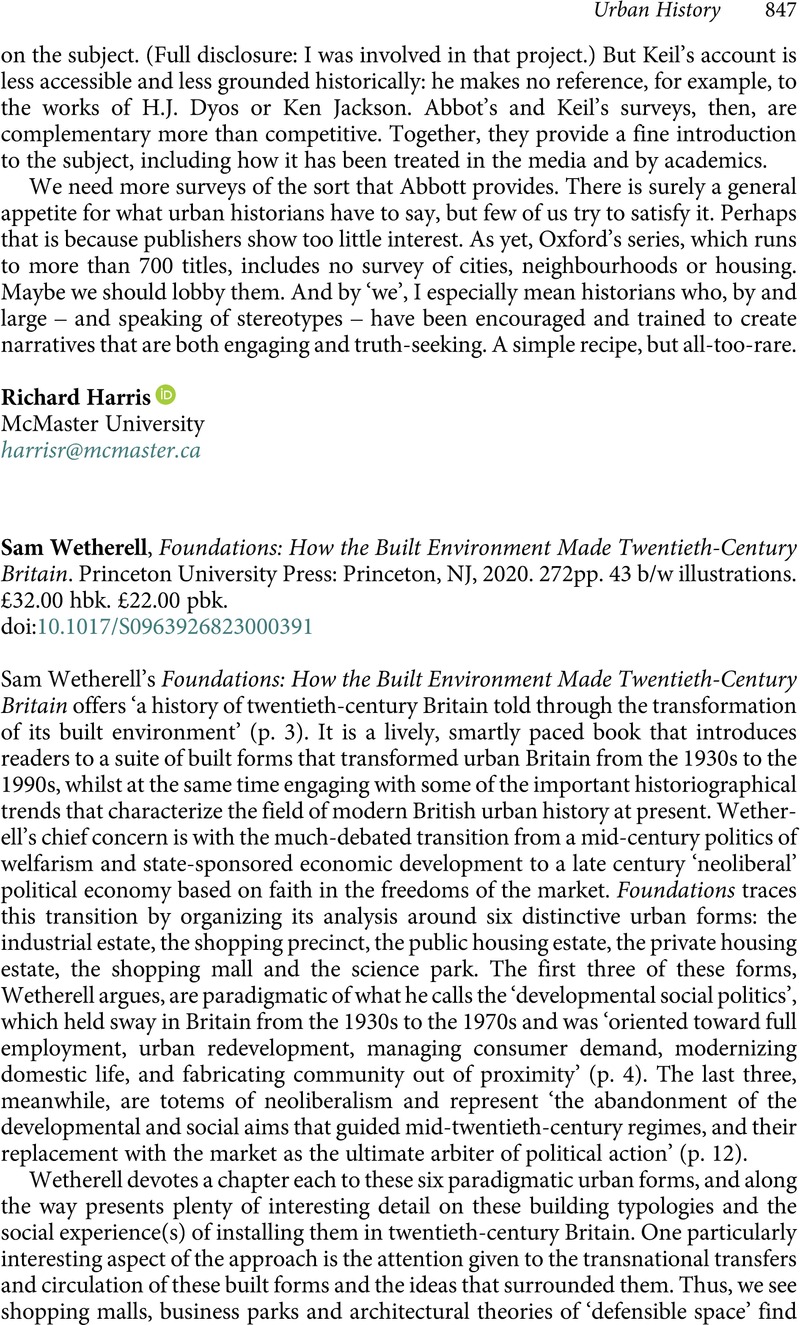No CrossRef data available.
Published online by Cambridge University Press: 24 August 2023

1 A. Hommels, ‘STS and the city: techno-politics, obduracy and globalisation’, Science as Culture, 29 (2020), 410–16; T.F. Geiryn, ‘What buildings do’, Theory and Society, 31 (2002), 35–74.